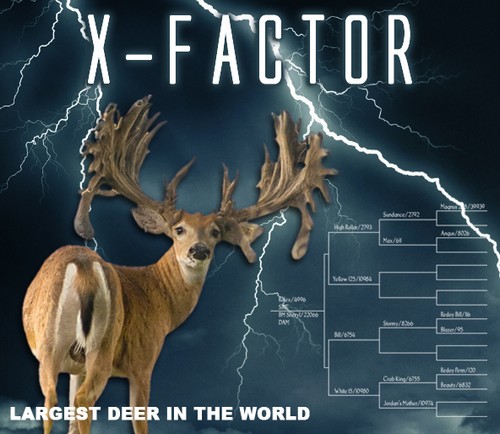Without a doubt, white-tailed deer hunting in the US has changed dramatically over the past few decades. That initial interest in deer management spurred both hunters and property owners to get involved doing things to help whitetail, which over time lead to the development of better habitat, monitoring of deer populations on private lands, harvest management and ultimately better, bigger deer. The benefits of whitetail management are numerous, but the one take-home-point on top of everyone’s head is that bucks on managed properties grow larger antlers.
Ask any deer biologist and they will tell you that there are a multitude of factors involved when it comes to managing a deer herd for trophy bucks. And that’s the truth, if someone is managing a deer herd. But what if that someone is just managing individual deer? Well, that simplifies things. Or does it? The topic of commercial deer breeding is a hotly debated topic within the deer hunting community, around campfires, on internet hunting forums and at family reunions. The non-hunting community, which vastly outnumbers hunters, also has its eyes on those involved in deer breeding and hunting.

The following article, based on a self-proclaimed 18-month in-depth investigation, states that the commercial deer breeding industry is entirely responsible for the spread of deer diseases and is costing tax payers, both those that hunt as well as those that don’t, millions of dollars each year. It’s definitely interesting reading material.
Source: “It looks like a caricature of a deer, this dainty white-tailed buck whose neck slumps under the weight of the gnarled antlers sprawling from its head. This is X-Factor, an Indiana deer that in his prime was worth an estimated $1 million. His value as a stud comes not from research and not from the quality of his venison. Instead, his value is in those freakish antlers, the product of more than three decades of selective breeding.
In less than 40 years, a relatively small group of farmers has created something the world has never seen before — a billion-dollar industry primarily devoted to breeding deer that are trucked to fenced hunting preserves to be shot by patrons willing to pay thousands for the trophies.
An Indianapolis Star investigation has discovered the industry costs taxpayers millions of dollars, compromises long-standing wildlife laws, endangers wild deer and undermines the government’s multibillion-dollar effort to protect livestock and the food supply.
To feed the burgeoning captive-deer industry, breeders are shipping an unprecedented number of deer and elk across state lines. With them go the diseases they carry. Captive-deer facilities have spread tuberculosis to cattle and are suspected in the spread of deadly foreign deer lice in the West. More important, The Star’s investigation uncovered compelling circumstantial evidence that the industry also has helped accelerate the spread of chronic wasting disease, an always-fatal deer disease similar to mad cow. CWD now has been found in 22 states.
CWD’s spread roughly coincides with the captive-deer industry’s growth. In half of the states where CWD was found, it first appeared in a commercial deer operation. Officials in Missouri, Nebraska, New York and Canada think captive deer or elk introduced the disease to the wild.
So far, government programs have failed to halt CWD’s spread, largely because there is no reliable way to test live animals for the disease. So infected deer may be shipped into disease-free states, where they can infect other animals, captive or wild. The Star’s investigation uncovered examples of deer escaping from farms, shoddy record keeping and meager penalties for those caught breaking the rules, which further undermine state and federal efforts to contain the disease. Plus, in less than a decade, more than a dozen people have been charged with smuggling live deer across state lines.
Although CWD’s risk to humans is considered minimal, scientists say it’s unwise to allow it to spread unchecked. No human is known to have contracted CWD. But scientists and government health officials say the chances of it jumping the species barrier to humans, as they suspect mad cow did, increase as more deer are infected.
In the first comprehensive examination of the growth and associated risks of deer breeding and farming by a major newspaper, The Star submitted public records requests to all 50 states and the federal government, reviewed at least 20 studies and conducted more than 100 interviews.
What emerges is a picture of an industry made up of at least 10,000 farms and hunting preserves in the U.S. and Canada, a boutique business that’s part livestock and part wildlife and often falls into a regulatory gap between agriculture and natural resource agencies. And, when it comes to hunting deer in fenced preserves, the owners are often free to set their own rules. Read the rest…